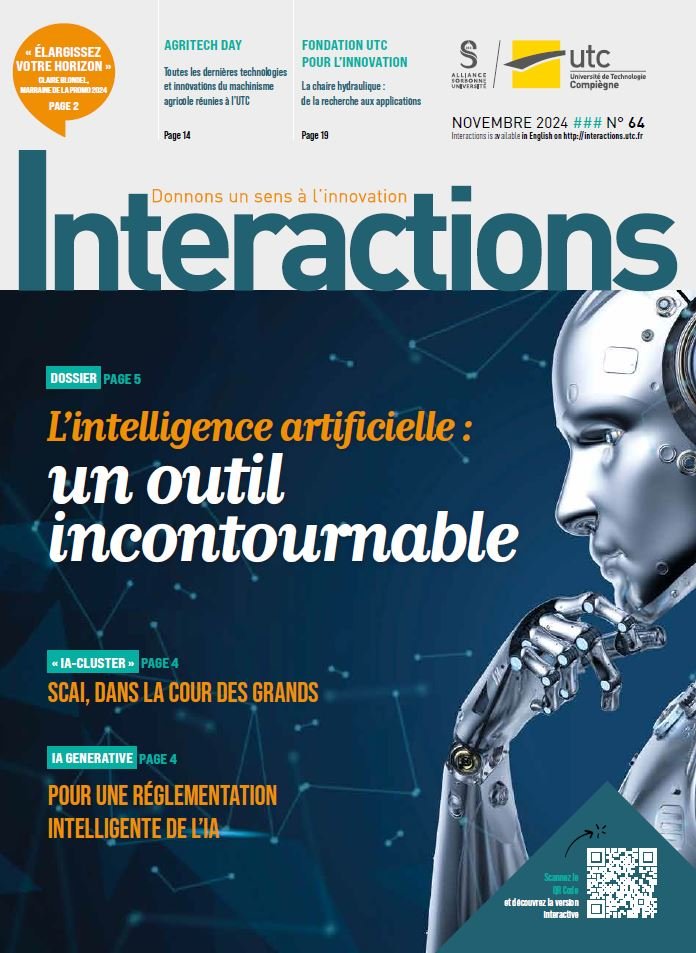Latest-generation supercomputers at UTC

Anne-Virginie Salsac, Director of Research at the CNRS and Florian De Vuyst, Full Professor at UTC, researchers at the Biomechanics and Bioengineering Laboratory (BMBI), are hosting two supercomputers dedicated in particular to applications in biomedicine and bioengineering.
Supplied by Nvidia and funded by the European Research Council (ERC), this new-generation highperformance computing (HPC) equipment makes UTC a pioneer among French engineering schools. So, what seemed like a real Christmas story came true? During the summer of 2023 in Marseille, I took part in a summer school on intensive computing and GPUs (Graphics Processing Units). It was there that members of the CEA, with whom I had worked for a long time before, told me about the imminent release of these processors, which I was able to preview and meet Cristel Saudemont, Director of Nvidia France. The company was preparing the worldwide release of these ‘SuperChips’, whose name ‘GH200 Grace Hopper* ‘ was a tribute to the woman who invented the Cobol machinelanguage», Florian De Vuyst recounts.
The opportunity to have machines that are a concentrate of innovative technologies was obvious, but the price was an obstacle. In the end, the solution came from Nvidia. «We learned that the group was offering research institutions the possibility of acquiring a maximum of two supercomputers at a much lower price than that initially quoted. The icing on the cake was that the ERC agreed to finance the cost of the two machines,» explains Anne-Virginie Salsac.
What are the features of the GH200 Grace Hopper? «This «SuperChip» comprises two types of processors placed side by side. The first, the CPU, is a conventional processor with 72 cores or ARMtype logic processing units; the second is a GPU (graphic processor) with 20 000 cores, compared with a few thousand in recent conventional GPUs. In our algorithms, it’s not so much the computing power that slows us down as the communications, i.e., the back and forth exchanges between the elements. The Grace Hopper SuperChip is the only one to offer this kind of joint architecture, which allows us to optimise and improve communication between elements without using intermediary elements such as an external communication bus, for example, as the bus is integrated into the machine. As a result, processing power is multiplied by a factor of around sixty Teraflops (Tera Floating-Point operations per second), equivalent to the power available to the major computing centres in the years 2000–2005. Grace Hopper’s other innovation is a 500 Gigabyte memory, where previously we were limited to 32 Gigabytes. This will enable us to do real 3D computing. Another advantage, which echoes one of the UTC’s major areas of research, is energy consumption, which, for comparable performance, is divided by 1 000, dropping from one megawatt for a cluster of machines to two kilowatts», describes Florian de Vuyst.
These super-machines will benefit the research activities of UTC in general and the UTC-BMBI laboratory in particular, which specialises in understanding the biomechanics of the human body and its repair, whether related to the flow of fluids such as blood or lymph, the musculoskeletal system or tissue engineering.
Can you quote some projects? «In particular, we are working on seeding biomaterials with cells to create faithful tissue models, multi-scale and multi-physics characterisation of tissues and the design of medical devices. Among the latter, a new implant, designed in collaboration with Hospital Henri Mondor and the CNRS, was patented in 2018 with the aim of repairing the mitral valve by passing through the blood vessels without opening the heart. Another project involves microcapsules protecting an active substance, such as a drug, which can be injected to bind to a specific target area,» explains Anne-Virginie Salsac.
Studying the dynamics of these devices requires complex numerical simulations, because of the strong interactions between their movement/ deformation and blood flow. These are areas where simulation needs are considerable. «The Grace Hoppers are going to change the game. Their computing power will make us much more efficient. We should be moving towards computing times that are compatible with clinical practice», she concludes.




